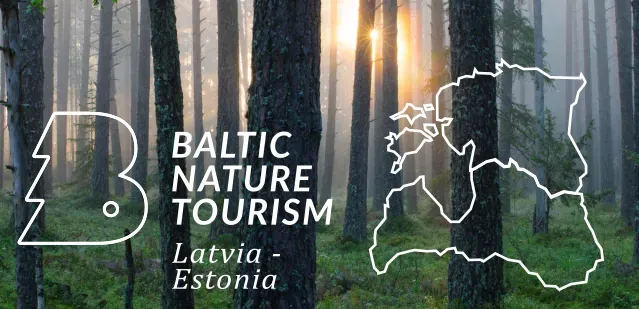
Celebrations in Livonia
Celebrations in Livonia
Celebrations related to the Catholic Church and local traditions included Christmas, a festival before Lent, Easter, Pentecost (the Brotherhood of Blackheads, which was an organisation for unmarried merchants, celebrated the Duke of May festival in City Hall Square in Riga, which remains important today (see www.maijagrafs.lv) and is related to the opening of the bird hunting season), the Summer Solstice (a market of solstice grasses is still held every year in Rīga), the Autumn Solstice (the relevant market is still held today, as well), and St Martin’s Day. Catholics celebrated the Assumption of Mary on August 15.
The main celebrations in Tallinn were Christmas and a festival before Lent, but people also commemorated All Souls Day on November 1 (Hingedepäev then, Hinkepe today) and St Martin’s Day. A list of foods served for All Soul’s Day in 1376 has survived to this very day, featuring beer, wine, chicken, goose, pork, honey, pepper, onions, butter, cheese, nuts and bread. (Anu Mänd, Festive Food in Medieval Riga and Reval, 1999).
Foods related to Lent
Meals were regulated on the basis of religion. There were a great many fasting days each year, when people were not allowed to eat fish. Tricky monks tried to avoid the rules by declaring that beavers were fish, because they also swam in the water, also arguing that God created birds on the same day as fish, so birds could be boiled in soup and eaten even on fasting days. The main festival before Lent was one of the most ornate and rich parties each year. Special rules for the banquet and the tournament can be found in the statutes of the Brotherhood of Blackheads, which were written in 1416. In 1510, there was a whole new set of regulations for the festival, and these were later supplemented with various rules issued by the Rīga City Council.
The festival began on Monday with a small meal, after which freshly brewed beer was tasted. The culmination of the festival began on Wednesday and continued for eight days with ornate banquets, guests, music, horseback rides, tournaments in the market square, parades and dancing. This is how people prepared for the long fast that lasts for 40 days before Easter. One description of the festival describes 11 barrels of beer and honey beer made of five pots of honey, two pounds of ginger, two pounds of nutmeg and four pounds of African pepper to season meat dishes, bread, meat, fish, vegetables and fruits, plus two pounds of candy.
In archives, we find texts related to a banquet organised by the guild of load-carriers for the pre-Lent festival in 1697: “The meal really was substantial. We ate three bulls and five calves and drank 26 barrels of beer.” The banquet also involved salt, butter, root vegetables, onions, bread, lots of wine, lots of rum and lots of vodka. When supervisory institution told the guild that that much beer should not be drunk, the excuse was that the men had worked long and hard to take care of poor and elderly brothers, as well as the families of colleagues who had died. The argument was that ten mugs of beer were nothing excessive for these men. (Jānis Straubergs, History of Rīga, 1937).
Livs who lived on the coastline also celebrated the pre-Lent festival. Merry young women went from one homestead to the next, singing songs. “Meanwhile, the lady of the house had placed a large pile of pierogi (buns with fish) on the table with brandy, beer and a large bowl of boiled beans and peas. She brought her honest guests to the loaded table and asked them to eat and drink as much as the wanted, because it was known that if the guests were not fed properly, the lambs and baby goats would be lame.” (News and Reports about Issues in the Kingdom of God, 1852). People in Latvia and Estonia still bake yeast buns with whipped cream for the festival, which is known as Meteņi in Latvian. A traditional food for the festival is pancakes.
Banquets in Livonia
Also typical of the Livonian period were rich banquets that were organised for high-ranking guests. Noblemen mostly ate meat and fish. Whole piglets were roasted, with the tasty fats bubbling on the fire. There was also roast chicken and roast goose. Noblemen entertained themselves by hunting, then preparing meat from moose, wild boar, rabbits, grouse and ducks. There were special guns to shoot birds, and that was part of each celebration. If someone who was not authorised was caught shooting animals or birds in the forests of the noblemen, that person could face capital punishment by hanging.
There are particular legends about the banquets that were organised by Walter von Plettenberg, who ordered his chefs to come up with various surprises related to the presentation of food. Before the banquet, herds of deer could be chased down the street of Cēsis. There were pierogi which, when cut open, released live birds. Sometimes the chef was told to sew together a piece of wild board on one end and a piece of another animal on the other end. These were fancy parties that could last for many days up to two weeks. Other elements in preparing foods for Livonian banquets included almonds, hazelnuts, olives, raisins, figs, saffron, poppy seeds, anise, vinegar, mustard, terribly expensive sugar, as well as other spices that are mentioned in the section about the importation of spices. Cakes and other pastries were baked for the banquets, and there are 15th century texts that tell us that gingerbread was also baked.






